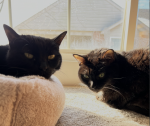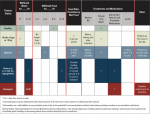Yes, this is good news.

The IAA is quite a bit higher than Neko's. It is so odd to have two recently just IAA cats with Minner too.
A dental is absolutely next on the agenda. Fixing any source of infection/inflammation seems to really help IAA kitties. Black Kitty, our first IAA kitty here eventually went OTJ once Sandy got his dentals done. He actually needed two dentals. Treating Neko's acro helped her IAA.
There isn't really a good insulin option to switch to right now and the effects of an insulin switch on the antibodies can be temporary. They learn and adapt.

Sandy learned a lot about IAA. Black Kitty's spreadsheet and more discussion can be found in this post:
IAA - Ruminations - join the conversation The following is a quote from her:
IAA is idiopathic-it arises spontaneously. Check out
Doodles ss, January into February 2016 for an example.
A massive depot is one element to consider. There are 2 additional unpredictable variables to consider. The first is that when resistance breaks, previously bound insulin is released back into circulation. How much and when is anybody’s guess. The second variable is that spending more and more time in the healing numbers (50-120) with a little luck can result in the pancreas healing and a returning to the job of producing insulin. So you have contributions from the depot, previously bound insulin that’s been released and maybe the pancreas starting to sputter.
Insulin resistance due to IAA is much different than glucose toxicity. It’s not a matter of reaching the magic dose and breaking the resistance. Its giving your kitty enough insulin to try and stay below renal threshold while keeping your antenna up to spot signs that the IAA is letting go.
The way it works is that a cat starts producing a crazy amount of antibodies toward the insulin. The antibodies grab insulin before it gets to do its job.
When insulin sensitivity returns, it can happen quite suddenly and large amounts of insulin previously bound to the antibodies may be released. Due to the half life of the antibodies insulin needs can fluctuate for several weeks. Add a large depot (the gift that keeps on giving ) to the mix and it gets more interesting. On BKs ss you can see some of the aftermath first 3 weeks of February 2009. I had very little sleep.
For starters, below you will find some important information about IAA-
- Injected insulin first gets bound to the antibodies. Any insulin that does not get bound goes toward metabolizing sugars. How much goes to antibodies and how much goes to metabolizing sugars is anybody’s guess and a moving target
- IAA can retard the initial rise of available insulin after an injection.
- IAA can lead to an increase in the half-life of free (unbound) insulin in circulation because some bound insulin gets released into circulation. The increase in half-life can lead to prolongation of action.
· Its self limiting and generally lasts about a year
- When insulin sensitivity returns, it can happen quite suddenly
- At these times, large amounts of insulin previously bound to the antibodies may be released, so avoiding hypoglycemia is a major concern.
- The release of insulin from the antibodies can happen at inopportune times
As far as BCSs go, keep in mind that with IAA you are more likely to see the effects in the cycle following the cycle of the BCS.





